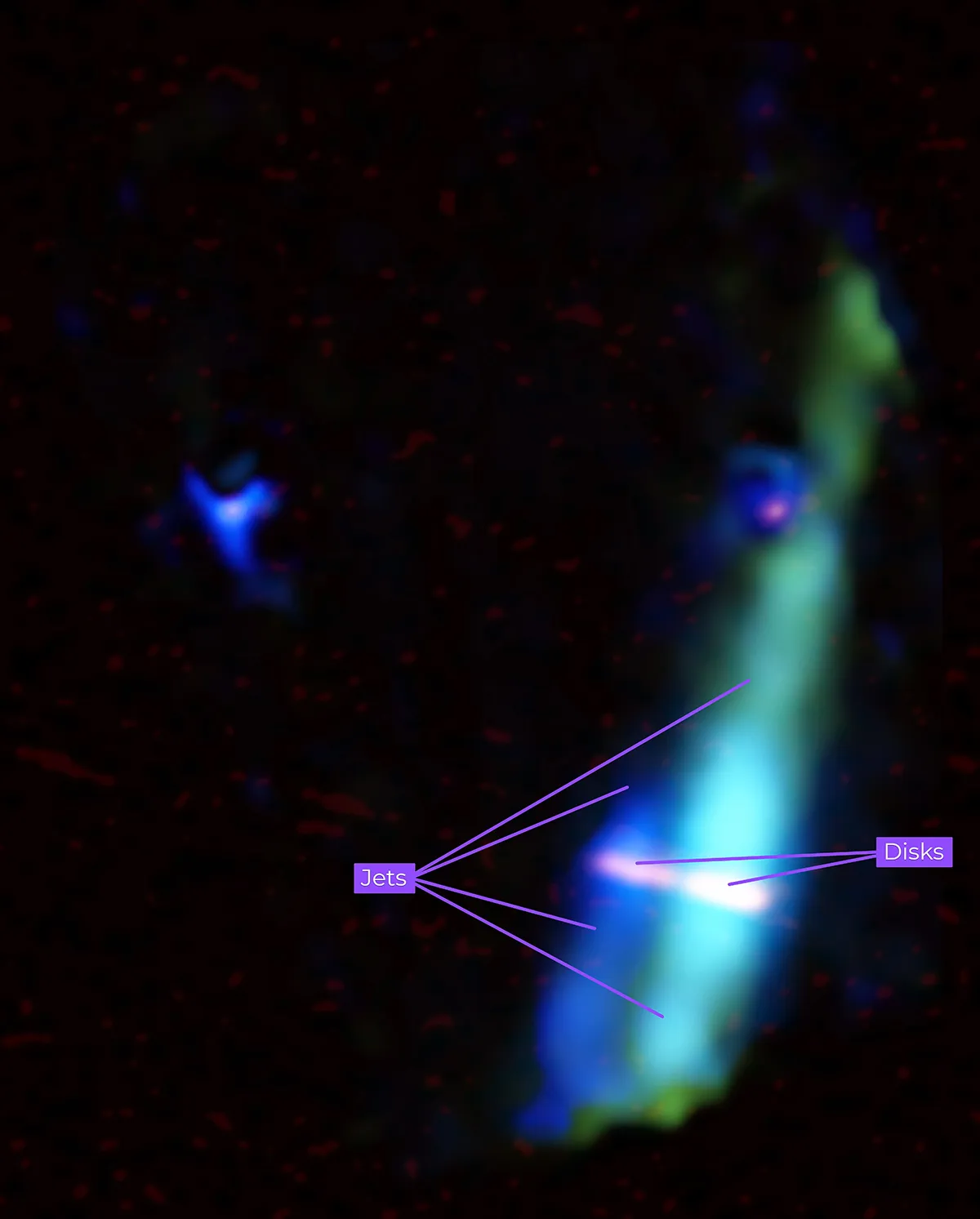Astronomers got a huge surprise when they discovered that the star known as WL 20S, which has been intensively studied since the 1970s, is actually not one, but a pair of stars.
The surprising twins were discovered using the James Webb Space Telescope during a study of a group of young stars called WL 20.
What’s more, observations with the Atacama Large Millimeter/submillimeter Array (ALMA) show disks of dust and gas around both stars, and since the stars are relatively young at 2 to 4 million years old, it is possible that these disks could form planets.
The finding that WL 20S is a binary star was made with the Webb Telescope’s Mid-Infrared Instrument (MIRI) and presented at the 244th meeting of the American Astronomical Society on June 12, 2024.
The MIRI data also show that the twins have matching jets of gas ejecting into space from their north and south poles.
“Our jaws dropped,” says astronomer Mary Barsony, lead author of the paper describing the results.
“After decades of studying this source, we thought we knew it pretty well. But without MIRI, we wouldn’t know that these are two stars or that these jets exist. It’s really amazing. It’s like having a whole new set of eyes.”

Discovering twins and jets
WL 20 is located in the star-forming region of our Galaxy known as Rho Ophiuchi, just 400 light-years from Earth.
As a typical star-forming region, it is a huge cloud of gas and dust, making it difficult to probe its interior in visible light.
Because the James Webb Space Telescope observes in the infrared, it is able to peer through the dust and see what is hidden in star-forming regions like WL 20.
The same is true for ALMA, which observes at a wavelength called “submillimeter” and can also penetrate clouds of gas in the star-forming region.
ALMA was able to observe two disks of gas and dust surrounding the star WL 20S, but this could be interpreted as a single disk with a gap, according to the astronomers behind the study.
It is the discovery of two starbursts by MIRI that shows that WL 20S is a pair of twins.

The gas jets are composed of ions, or individual atoms with some electrons removed, and glow in the mid-infrared, but not at submillimetre levels, meaning Webb’s MIRI saw them but ALMA did not.
However, ALMA is able to observe the remnants of materials that surround very young stars after their formation.
The absence of such clouds in the ALMA observations indicates that the stars are beyond the initial stage of formation.
All of this means that the twins are transitioning from youth to adulthood, giving astronomers a chance to observe this crucial period in a star’s life cycle.
“The power of these two telescopes together is really incredible,” says Mike Ressler, project scientist for MIRI at NASA’s Jet Propulsion Laboratory and co-author of the new study.
“If we hadn’t seen that they were two stars, the ALMA results might have looked like a single disk with a gap in the middle. Instead, we have new data on two stars that are clearly at a critical point in their lives.” , when the processes that created them fade away.
“It’s amazing that this region still has so much to teach us about the life cycle of stars. I’m excited to see what else Webb reveals.”